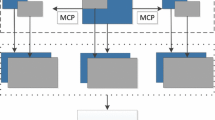Abstract
In the applications of Free View TV, pre-estimated depth information is available to synthesize the intermediate views as well as to assist multi-view video coding. Existing view synthesis prediction schemes generate virtual view picture only from interview pictures. However, there are many types of signal mismatches caused by depth errors, camera heterogeneity or illumination difference across views and these mismatches decrease the prediction capability of virtual view picture. In this paper, we propose an adaptive learning based view synthesis prediction algorithm to enhance the prediction capability of virtual view picture. This algorithm integrates least square prediction with backward warping to synthesize the virtual view picture, which not only utilizes the adjacent views information but also the temporal decoded information to adaptively learn the prediction coefficients. Experiments show that the proposed method reduces the bitrates by up to 18 % relative to the multi-view video coding standard, and about 11 % relative to the conventional view synthesis prediction method.









Similar content being viewed by others
References
Joint Video Team (JVT) of ISO/IEC MPEG and ITU-T VCEG. (2003). Draft ITU-T recommendation and final draft international standard of joint video specification (ITU-T Rec. H.264-ISO/IEC14496-10 AVC) JVT-G050.
ISO/IEC JTC1/SC29/WG11. (2008). Text of ISO/IEC 14496-10:200X/FDAM 1 multi-view video coding. Doc. N9978.
ISO/IEC MPEG & ITU-T VCEG. (2007). Multi-view Video plus Depth (MVD) format for advanced 3D video system. Doc. JVT-W100.
Martinian, E., Behrens, A., Xin, J., & Vetro, A. (2006). View synthesis for multi-view video compression. In: Proc. Picture Coding Symposium PCS, Beijing, China.
Na, S.-T., Oh, K.-J., & Ho, Y.-S. (2008). Joint coding of multi-view video and corresponding depth map. In: Proc. International Conference on Image Processing ICIP, San Diego, USA, 2468-2471.
Yea, S., & Vetro, A. (2009). View synthesis prediction for multi0view video coding. Signal Processing: Image Communication, 24(1), 89–100.
Iyer, K. N., Maiti, K., Navathe, B., Kannan, H., & Sharma A. (2010). Multiview video coding using depth based 3D warping. In: Proc. International Conference on Multimedia and Expo ICME, Singapore, 1108–1113.
Shimizu, S., Kimata, H., Sugimoto, S., & Matsuura N. (2011). Decoder side macroblock information derivation for efficient multi-view video plus depth map coding. In: Proc. 3DTV Conference, Turkey.
Kim, W.-S., & Ortega A. (2009). Depth map distortion analysis for view rendering and depth coding. In: Proc. International Conference on Image Processing ICIP, Cairo, Egypt, 721–724.
Merkle, P., Muller, K., Smolic, A., & Wiegand T. (2006). Efficient compression of multi-view video exploiting inter-view dependencies based on H.264/MPEG4-AVC. In: Proc. IEEE International Conference on Multimedia and Exposition, July.
Yamamoto, K., Kitahara, M., & Kimata, H. (2007). Multi-view video coding using view interpolation and color correction. IEEE Transaction on Circuits and Systems for Video Technology, 17(1), 1436–1449.
Hur, J.-H., Cho, S., & Lee, Y.-L. (2007). Adaptive local illumination change compensation method for H.264/AVC-based multi-view video coding. IEEE Transaction on Circuits and Systems for Video Technology, 17(11), 1496–1505.
Telea, A. (2004). An image in-painting technique based on the fast marching method. Journal of Graphics Tools, 9(1), 25–36.
Mori, Y., Fukushima, N., Fujii, T., & Tanimoto, M. (2008). View generation with 3D warping using depth information for FTV. In: Proc. 3DTV Conference, May, 229–232.
Chen, Y., Pandit, P., Yea, S., & Lim, C.S. (2009). Draft reference software for MVC. Joint VideoTeam (JVT) of ISO/IEC MPEG & ITU-T VCEG, ISO/IEC JTC1/SC29/WG11 and ITU-T SG16 Q.6,Doc. JVT-AE207, London.
Zitnick, C. L., Kang, S. B., Uyttendaele, M., & Szeliski, R. (2004). High-quality video view interpolation using a layered representation. In: Proc. ACM SIGGRAPH, 600–608.
GIST 3D Video Sequences, Available at: ftp://203.253.128.142.
ETRI/MPEG Korea Forum 3D Video Sequences, Available at: ftp://203.253.128.142.
Bjøntegaard, G. (2001). Calculation of average PSNR differences between RD-curves. VCEG Doc. VCEG-M33, April.
Acknowledgments
The research was supported by the major national science and technology special projects (2010ZX03004-003-03, 2010ZX03004-001-03), the National Basic Research Program of China (973 Program) (2009CB320906), the National Natural Science Foundation of China (60832002, 60970160, 61070080, 61003184, 61271256), 2011 Academic Scholarship for Doctoral Candidates of Wuhan University.
Author information
Authors and Affiliations
Corresponding author
Rights and permissions
About this article
Cite this article
Hu, J., Hu, R., Wang, Z. et al. Adaptive Learning Based View Synthesis Prediction for Multi-View Video Coding. J Sign Process Syst 74, 115–126 (2014). https://doi.org/10.1007/s11265-013-0741-7
Received:
Revised:
Accepted:
Published:
Issue Date:
DOI: https://doi.org/10.1007/s11265-013-0741-7




